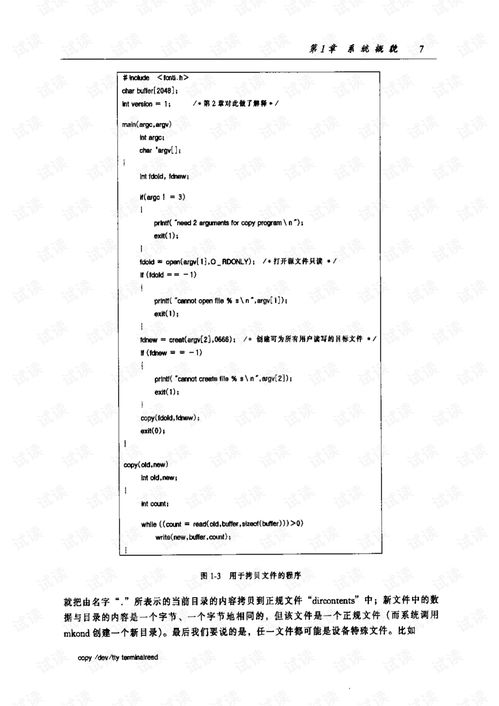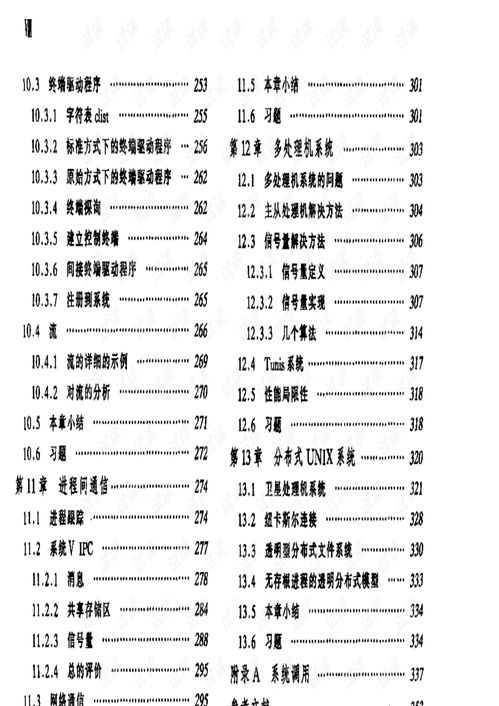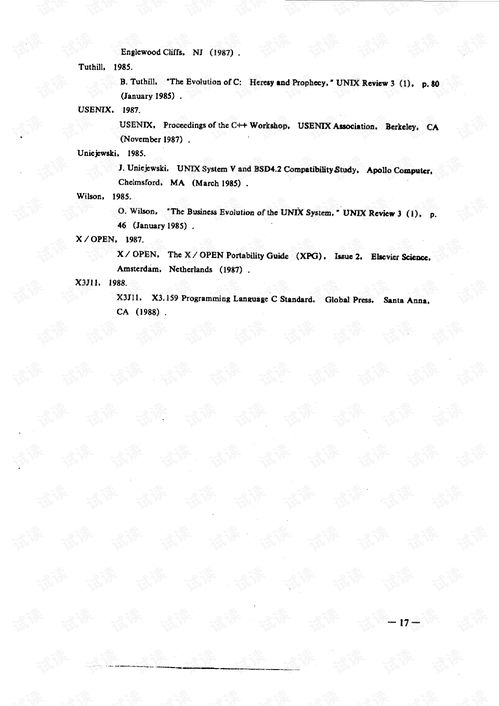
unix操作系统设计 英文版, Introduction to UNIX Operating Systems
时间:2024-12-14 来源:网络 人气:
Understanding the Design of UNIX Operating Systems
Introduction to UNIX Operating Systems

UNIX is a family of multitasking, multiuser computer operating systems that are known for their stability, security, and portability. The design of UNIX operating systems has been influential in the development of other operating systems, including Linux. In this article, we will explore the key aspects of UNIX operating system design, including its architecture, file system, and user interface.
Architecture of UNIX Operating Systems

The architecture of a UNIX operating system is designed to be modular and scalable. It consists of several layers, each with its own set of responsibilities. The main layers of the UNIX architecture include:
- Kernel: The kernel is the core of the operating system and is responsible for managing the system's resources, such as memory, processes, and I/O devices. The kernel provides a set of system calls that allow user-space programs to interact with the hardware.

- System Libraries: The system libraries provide a set of functions that implement the system calls and other services required by user-space programs. These libraries are written in C and are used by most programs on a UNIX system.

- User Space: The user space consists of all the programs and applications that run on the system. These programs are written in high-level programming languages, such as C, C++, and Python, and are executed by the kernel.

File System Design

The file system is a crucial component of any operating system, and UNIX operating systems are no exception. The UNIX file system is designed to be hierarchical and is organized into directories and files. The key features of the UNIX file system include:
- Hierarchical Directory Structure: The file system is organized into a tree-like structure, with a single root directory at the top. Each directory can contain files and subdirectories, and the structure can be navigated using a set of commands, such as `cd`, `ls`, and `pwd`.

- File Permissions: UNIX file systems use a set of permissions to control access to files and directories. These permissions are defined by three categories: owner, group, and others. Each category can have read, write, and execute permissions.

- Symbolic Links: Symbolic links are a feature of the UNIX file system that allows one file to be linked to another file or directory. This feature is useful for creating shortcuts and for implementing file system navigation.

User Interface Design

The user interface of a UNIX operating system is designed to be simple and efficient. The main components of the user interface include:
- Command Line Interface (CLI): The CLI is the primary user interface for interacting with a UNIX system. It allows users to execute commands by typing them into a terminal window. The CLI is powerful and flexible, but it can be challenging for new users to learn.

- Graphical User Interface (GUI): Many UNIX operating systems also provide a GUI, which allows users to interact with the system using a mouse and keyboard. The GUI provides a more intuitive and user-friendly interface, but it can be less efficient than the CLI for certain tasks.

Security and Stability

Security and stability are two of the most important aspects of UNIX operating system design. The design of UNIX systems includes several features that contribute to their security and stability:
- Access Control: UNIX systems use a set of access control mechanisms to ensure that only authorized users can access sensitive data and resources.

- Process Isolation: UNIX systems use a process isolation mechanism to ensure that each process runs in its own protected memory space. This prevents one process from interfering with another process.

- File System Caching: UNIX systems use a file system caching mechanism to improve performance and reduce disk I/O. This mechanism stores frequently accessed data in memory, which can be accessed more quickly than data on disk.

Conclusion

The design of UNIX operating systems has been influential in the development of other operating systems, including Linux. The modular and scalable architecture, hierarchical file system, and user-friendly interface are just a few of the features that make UNIX operating systems so popular. As technology continues to evolve, the design of UNIX operating systems will continue to evolve as well, ensuring that they remain relevant and useful for years to come.
Tags

教程资讯
教程资讯排行













